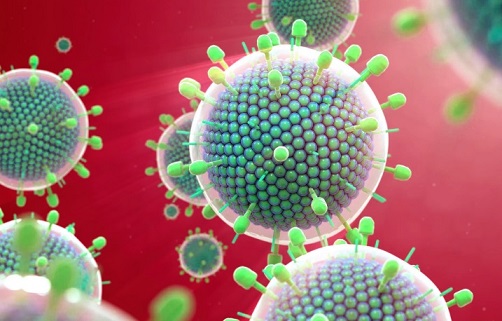Nikhil Prasad Fact checked by:Thailand Medical News Team Feb 14, 2025 1 month, 3 weeks, 5 days, 23 hours, 31 minutes ago
Medical News: Human parainfluenza virus type 2 (HPIV2) is a significant respiratory pathogen affecting people of all ages, particularly young children, the elderly, and immunocompromised individuals. Despite its widespread presence, HPIV2 remains an underappreciated cause of respiratory illness, often leading to complications such as pneumonia, bronchitis, and croup. Scientists have long sought to understand how this virus evolves at the molecular level to enhance strategies for treatment and prevention.
 Japanese Researchers Find That the Human Parainfluenza Virus Type 2 is Evolving
Japanese Researchers Find That the Human Parainfluenza Virus Type 2 is Evolving
A groundbreaking study led by researchers from the National Institute of Infectious Diseases, Kyorin University, Gunma Paz University, and Gunma University has provided new insights into the molecular evolution of the fusion (F) gene of HPIV2. This
Medical News report delves into how the virus has evolved over time and how it is still evolving, the implications of its genetic changes, and what this means for future public health measures.
Investigating the Evolutionary Path of the HPIV2 F Gene
The research team analyzed the genetic sequences of the F gene from HPIV2 strains collected from different geographical regions over multiple decades. Their goal was to determine how the virus has evolved, whether it has undergone significant genetic changes, and how these changes affect its infectivity and immune evasion strategies.
Their findings revealed that the HPIV2 F gene has diverged into two major genetic clusters. These clusters appear to have evolved from a common ancestor that existed approximately a century ago, around 1916. The study suggests that cluster 1 exhibits a faster evolutionary rate and greater genetic diversity compared to the more stable cluster 2. This indicates that cluster 1 strains may be better at adapting to immune system responses, potentially making them more resilient to immune defenses.
Genetic Diversity and the Virus's Evolutionary Timeline
By constructing a time-scaled phylogenetic tree, researchers estimated that the common ancestor of cluster 1 emerged around 1972, while the ancestor of cluster 2 appeared in 1928. Interestingly, no significant geographical bias was observed in the distribution of these clusters, suggesting that both lineages are circulating globally rather than being region-specific.
Further analysis of the genome population dynamics revealed a surge in the effective population size of the HPIV2 F gene between 2005 and 2015. This increase could be attributed to improved diagnostic methods and enhanced global surveillance rather than an actual rise in virus transmission.
How Fast Is HPIV2 Evolving?
One of the study’s key findings is that the HPIV2 F gene evolves at a rate of 4.20 × 10−4 substitutions per site per year. However, strains belonging to cluster 1 exhibited a higher evolutionary rate compared to those in cluster 2. The study highlights that HPIV2 is evolving at a rate that is intermediate among p
aramyxoviruses. While some related viruses, such as HPIV1 and HPIV3, show higher evolutionary rates, HPIV2 maintains a relatively stable mutation pattern.
Identifying Selective Pressures and Key Genetic Mutations
Using advanced bioinformatics tools, the research team conducted selective pressure analysis to identify specific regions in the F gene undergoing natural selection. The study found that most mutations in the HPIV2 F gene are under purifying selection, meaning that the virus tends to conserve its genetic structure rather than undergoing drastic changes.
However, the researchers identified several mutations in functionally significant regions, particularly within the fusion peptide domain (amino acids 107–131). This domain is crucial for the virus’s ability to merge with human cell membranes, enabling infection. Some of the detected mutations may have implications for immune recognition and antibody binding, which could affect vaccine and antiviral drug effectiveness.
Structural Modeling and Immunological Insights
To further understand the functional impact of these mutations, researchers used 3D structural modeling of the HPIV2 F protein. The models revealed that conformational epitopes - regions recognized by the immune system - are predominantly located in the apex and stalk regions of the F protein. These areas are critical for immune responses and could serve as potential targets for vaccine development.
The study also found that while the apex region is shared across both genetic clusters, some cluster-specific variations exist. This suggests that certain immune responses may differ based on the viral strain, potentially impacting vaccine efficacy.
Implications for Public Health and Vaccine Development
The findings of this study provide crucial insights into the evolution of HPIV2 and its potential impact on public health. The study suggests that while the virus is relatively stable, it is still capable of gradual genetic shifts that may influence its interaction with the human immune system.
Key takeaways from this research include:
-The HPIV2 F gene has diverged into two distinct clusters with different evolutionary rates.
-The virus has undergone significant population expansions in recent decades, possibly due to enhanced surveillance rather than increased transmission.
-Despite strong purifying selection, some mutations in critical functional regions may influence viral infectivity and immune recognition.
-The apex and stalk regions of the F protein are key immunogenic sites, making them potential targets for future vaccine development.
Conclusion
This study is a crucial step in understanding the molecular evolution of HPIV2 and its implications for public health. The relatively stable yet adaptable nature of the virus underscores the need for continued genomic surveillance to monitor emerging mutations.
Future research should focus on experimentally validating these findings through immune response studies and vaccine trials to determine how the identified genetic changes affect the virus’s ability to evade immune detection.
Strengthening surveillance and enhancing public health preparedness will be vital in mitigating the potential impact of HPIV2 on global respiratory health.
The study findings were published in the peer-reviewed journal: Microorganisms.
https://www.mdpi.com/2076-2607/13/2/399
For the latest on the Human Parainfluenza Virus Type 2, keep on logging to Thailand
Medical News.
Read Also:
https://www.thailandmedical.news/news/h5n1-bird-flu-vaccines-are-accelerating-viral-evolution-as-currently-observed-in-china
https://www.thailandmedical.news/news/in-2021-new-hmpv-variants-emerged-in-spain-drove-disease-severity-yet-no-genomic-surveillance-of-what-is-happening-today
https://www.thailandmedical.news/news/what-do-we-know-about-the-sars-cov-2-lp-8-1-variant-that-is-now-contending-to-supersede-the-xec-and-kp-3-1-1-variants
